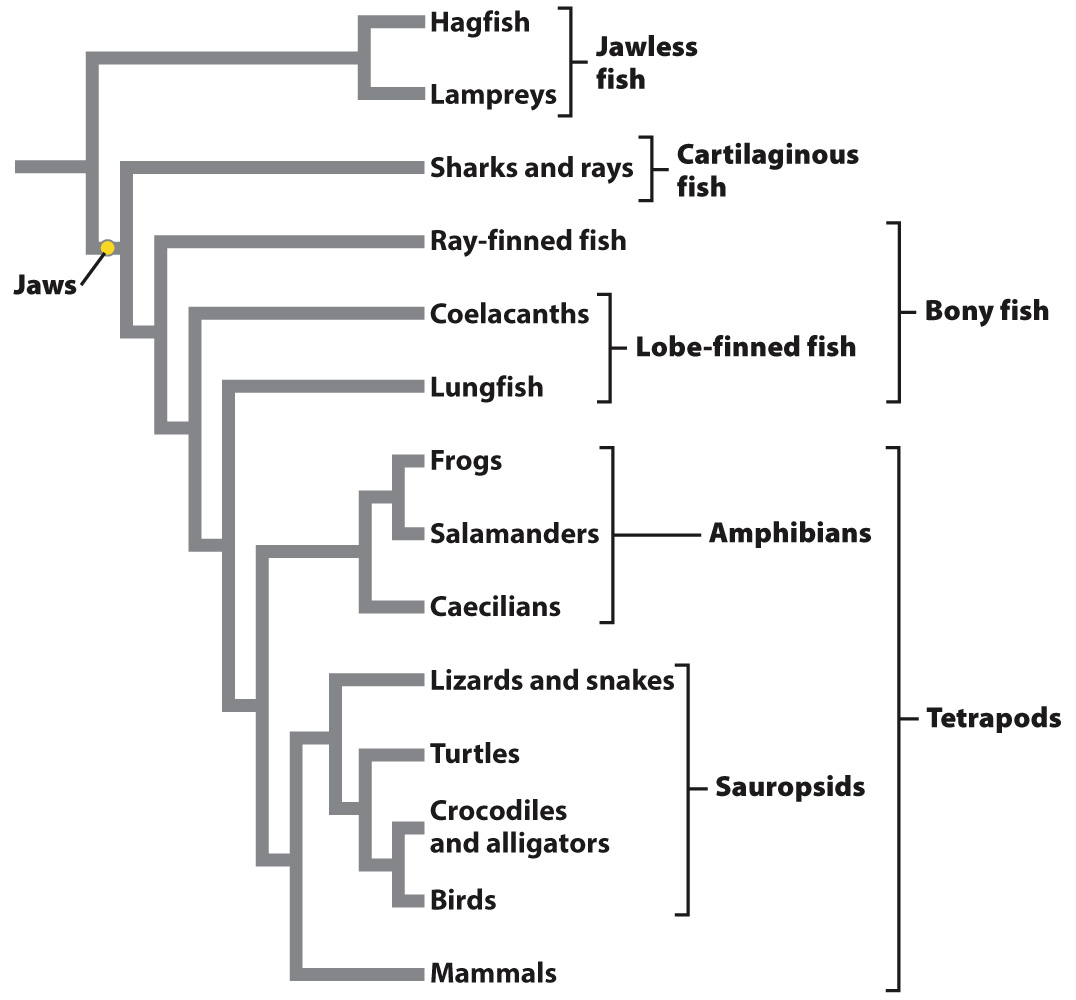Jaws and teeth provide specialized food capture and mechanical breakdown of food.
Jaws and teeth were an important evolutionary innovation for active predators. Some of the first vertebrates, the jawed fishes, became dominant in their aquatic environment through the ability to swim and bite forcefully to obtain their food. Fig. 40.10 shows a phylogenetic tree of vertebrates indicating the appearance of jaws. Jawed fish evolved from jawless ancestors, and jaws can be found in present-

Among vertebrates, mammals evolved a specialized jaw joint, the temporomandibular joint, as well as a great diversity of specialized forms of teeth. These teeth have cutting and crushing surfaces, enabling mammals to break down a variety of foods mechanically before swallowing. Fig. 40.11 illustrates the arrangement of specialized teeth in mammals with different diets. Teeth in the front of the mouth, the incisors, are specialized for biting. Others, such as the canines of dogs, cats, and other carnivores, are specialized for piercing the body of their prey. Saber-

Herbivorous animals, such as cattle, sheep, and horses, have specialized premolars and molars with prominent surface ridges. These teeth can shred tough plant material before it is swallowed and digested. Mammalian herbivores use their front incisors and canines to bite grasses and leaves, and then move the food to the back of the mouth, where it is ground and crushed between their ridged premolars and molars.